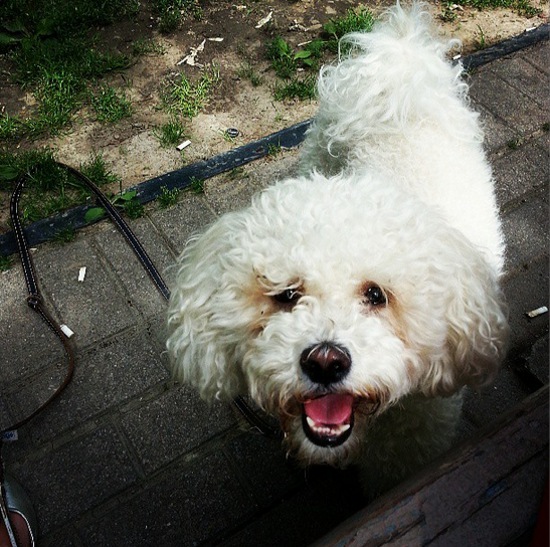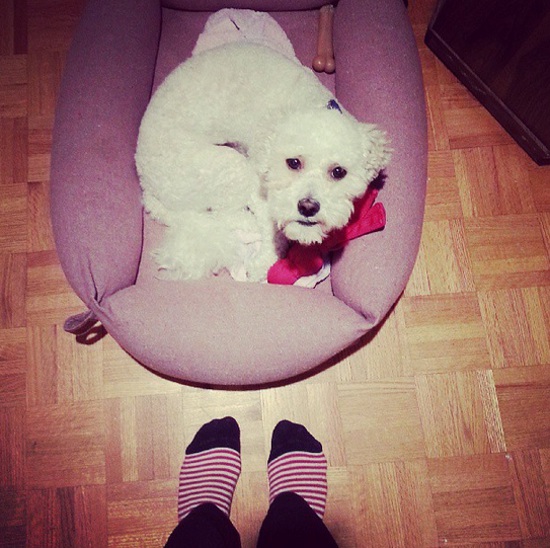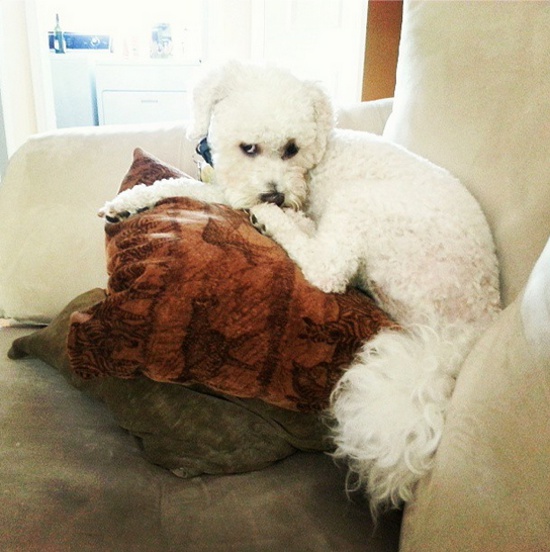 About a year ago, I moved to Toronto and into a new apartment. It was everything I was looking for in a space — hardwood floors, separate office space, working fireplace (a nice perk). But being in the heart of Toronto it was also a little noisier than Rory was used to compared to our sleepy Ottawa residence.
About a year ago, I moved to Toronto and into a new apartment. It was everything I was looking for in a space — hardwood floors, separate office space, working fireplace (a nice perk). But being in the heart of Toronto it was also a little noisier than Rory was used to compared to our sleepy Ottawa residence.
As a result she developed a bad habit — barking. Not only would she bark whenever she heard anything unexpected, but she would bark and charge down the hallway whenever she heard neighbouring dogs, people on the street or even our upstairs neighbours shuffling around in their apartment. Needless to say, it was a habit that had to stop.
So I started a strict training regiment. Using nothing but positive reinforcement, Rory’s frantic barking is now manageable and civilized. Here’s how I did it:
STEP 1: ACCEPTANCE
There is a saying — “if you can’t beat them, join them” — and that is the approach I took with Rory’s barking. There is no way you are ever going to stop a dog from barking and nor should you try.
A dog barks to tell you something isn’t quite right, that there is ‘danger’ nearby and to raise the pack’s attention. Trying to debark a dog through bark collars and negative reinforcement is like trying to combat a natural, engrained instinct that is programmed into a dog’s DNA. So instead, I chose to embrace Rory’s barking.
It is good that she raises the alarm when something is not quite right in her books — the key then became controlling the bark. In other words, I needed to train her to have an ‘off switch.’
STEP 2: REDIRECT
Every dog has at least one trick that they love to do and never fail to do when asked. For Rory this trick is ‘go to your bed.’ So I began to use that phrase to redirect Rory’s charging bark. Every time she started barking, I would tell her to ‘go to bed.’ Of course, she didn’t always go when asked in the beginning, so I would need to choral her to her bed and once all four paws landed in her bed, reward her with a treat right away.
 STEP 3: TREAT RIGHT – AND RIGHT AWAY
STEP 3: TREAT RIGHT – AND RIGHT AWAY
Just any old treat wouldn’t work in this situation, because you are trying to distract your dog from a high-energy and agitated state. In order to aptly capture Rory’s attention, I needed to be offering something truly fantastic, so I alternated between cheese and dehydrated cow’s lung.
I also made sure to reward Rory as soon as all four paws were in her bed so that she associated completing that action with the tasty treat. Any pause between command and completed command can cause confusion in a dog’s mind.
STEP 4: BE CONSISTENT
The trick to this sort of training technique is consistency. I couldn’t intervene in Rory’s barking display once in a while and then let it slide at other times. Regardless of what I was doing or where I was whenever at home, if she barked I intervened.
Every single time she barked I would follow, tell her ‘go to bed,’ direct her there if need be and instantly reward with a high-value treat. Every – single -time. You would be amazed how quickly dogs can learn new habits when rewarded positively.
 THE RESULTS
THE RESULTS
Now we have a happy quiet home once again. Yes, Rory still barks when she thinks something is wrong, but she is now enabled with a debark word/command. One quick bark, a word from me and she settles down again. In fact she has now got to the point that she barks once, sometimes twice, and then takes herself to bed to await cross-pawed for a treat.
Rather than punish Rory for giving in to her natural instinct and alerting her family that there might be danger, I have instead managed to reign that enthusiastic barking into a controllable and manageable habit. Rory feels like she is doing her job (protecting) and I am no longer getting frustrated (albeit sympathetic) calls from my lovely neighbours. It is a win, win, win situation.
{Photography via Pawsh Instagram}
PAWSH PERK: Expert advice for training a dog not to lick.

Here are some more videos that might help. This is where I’ve learned how to help train my Doug with his agility training.